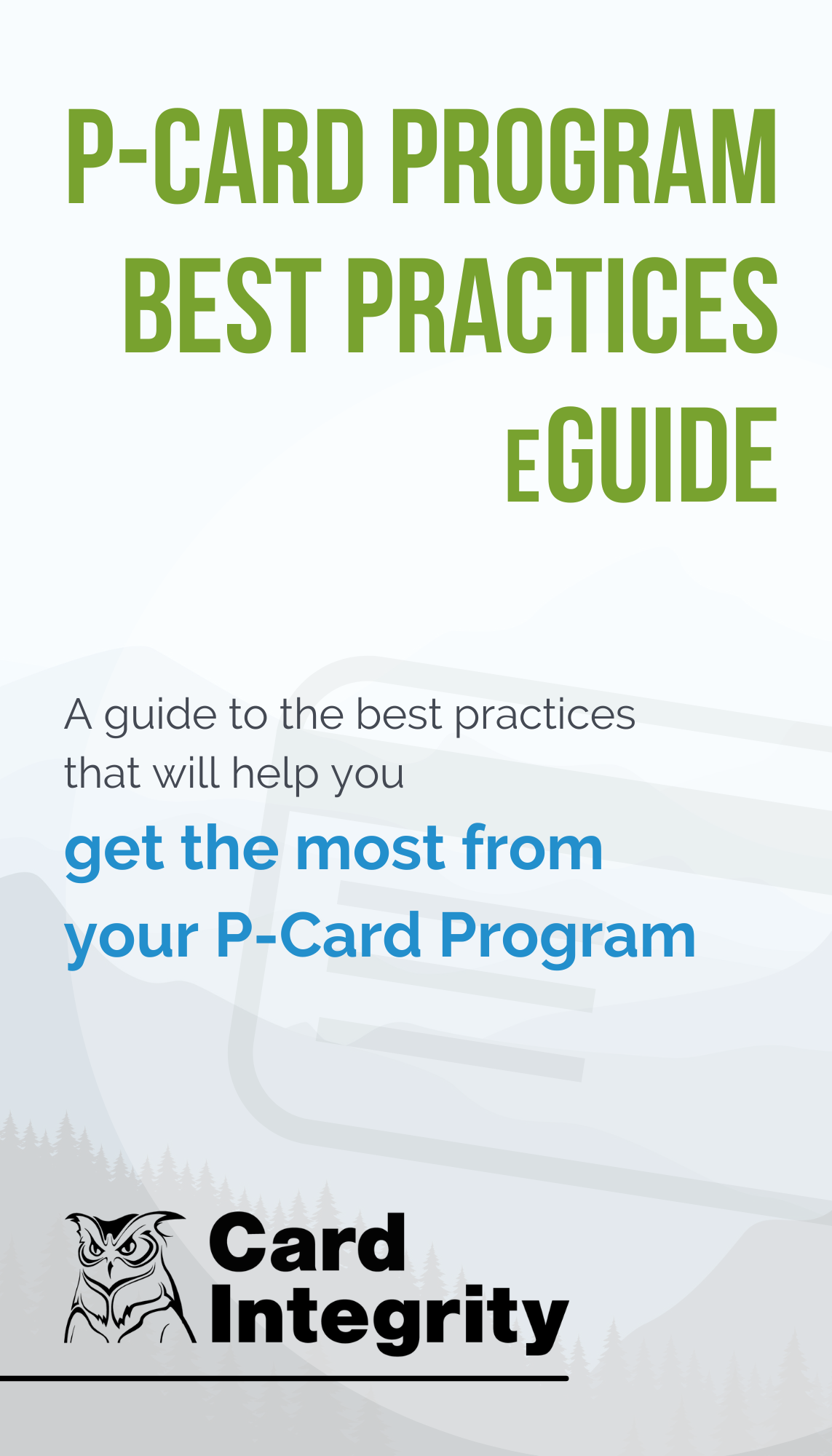Just as businesses and corporations of all types and sizes have taken advantage of the benefits and conveniences of purchasing card (P-Card) programs, so have higher education institutions. Some of the challenges and concerns of universities and colleges are identical to those of the business sector — but some are unique to higher education.
Communicating Government Requirements
Unlike private sector businesses, when it comes to spending, public universities and colleges often have unique demands placed upon them by both state and federal governments. These requirements can include:
- Where money is to be spent (that is, certain and specific vendors).
- How much money can be spent (that is, spend limitations and government-dictated budgets).
- What sort of things can be bought… and at what percentage. For example, a state might mandate that at least 25 percent of all purchases must be “green” or “sustainable” products. Or, it might insist that 80 percent of all service-based purchases are provided by businesses that reside within that particular state.
Such requirements need to be reflected in the policies and procedures of the existing P-Card program — and the sheer number and variation of these requirements can be difficult to communicate to users.
According to a 2022 report from the ACFE (Association of Certified Fraud Examiners), the average organization loses $117,000 per year on fraud, it goes undetected for 12 months, and 29% happened due to a lack of strong internal controls.
Tracking RFP Thresholds
Very often, state governments require prior authority be given to certain procurement decisions. According to a 2010 survey by the American Association of State Colleges and Universities (AASCU) together with the National Association of Education Procurement (NAEP), 37 states had purchase spend thresholds and commodity types that first needed to be approved by the state before the purchase could be made.
These approvals often require Requests for Proposals (RFP) for competitive bids from vendors. In fact, nearly all the institutions reporting (88 percent) to the aforementioned survey had cost thresholds requiring a formal bidding process.
The immense amount of circulating RFPs, their corresponding cost thresholds, and the specific vendor and product requirements that need to be followed can present an enormous challenge to higher education — in particular, when attempts are made to track all that information. This can be especially true when P-Cards are used (or possibly misused) to close these transactions.
Rebates: The Fear of Leaving Money on the Table
In addition to how they spend money, there’s also a great deal of government pressure on public colleges and universities to save money. One way of doing so is by making money, which can be achieved through procurement rebates.
In June 2016, the New York State Association of School Business Official (NYSASBO) P-Card program — a national P-Card program for school business officials — rewarded $15,740.77 in rebates to seven school districts. School officials earned these rebates simply by using their NYSASBO P-Cards for everyday purchases, such as school supplies, travel expenses, and even utility bills.
The opportunity to earn rebates is available to higher education institutions as well — but the only way to really know what P-Card companies are offering such rebates is through research. Many banks offer “cash back” on P-Cards for organizations, but diligence on the part of the organization is key to find out who is making such offers and how those offers manifest via real, daily transactions. Unfortunately, banks rarely volunteer this information. Of course, such research takes both time and personnel — and that can translate into costs as well.
The Cost of Inaction
The solutions to the unique challenges that higher education has with P-Cards might indeed be mundane — and because they aren’t so exciting, perhaps that’s all the more reason why those solutions aren’t being applied. But these solutions are also quite achievable, especially when Card Integrity provides them.
While immense size and numbers might seem to be large part of higher education’s P-Card issues, they aren’t problems for Card Integrity. Our solutions are designed to handle up to five million card transactions a month.
And the solutions provided by Card Integrity are exactly what higher education needs to face its unique challenges:
- Compiling complete and thorough policies and procedures that include all government requirements.
- Creating and administering adequate training, so that everyone knows and understands how to use P-Cards correctly and how to oversee the P-Card program.
- Improved tracking of the often overwhelming amount of RFPs — as well as the vendor/product information they contain — to ensure compliance with government demands.
- Better reviewing of all spending to prevent the violation of any cost threshold.
P-Card Best Practices
Complete the form below for access to an in-depth P-Card Program Best Practices Guide with detailed information and tips when it comes to policy, management, infrastructure, auditing, submission, purchasing, and training. Using these tips can help your team find opportunities for cost savings and protect your card program from wasteful spending.




